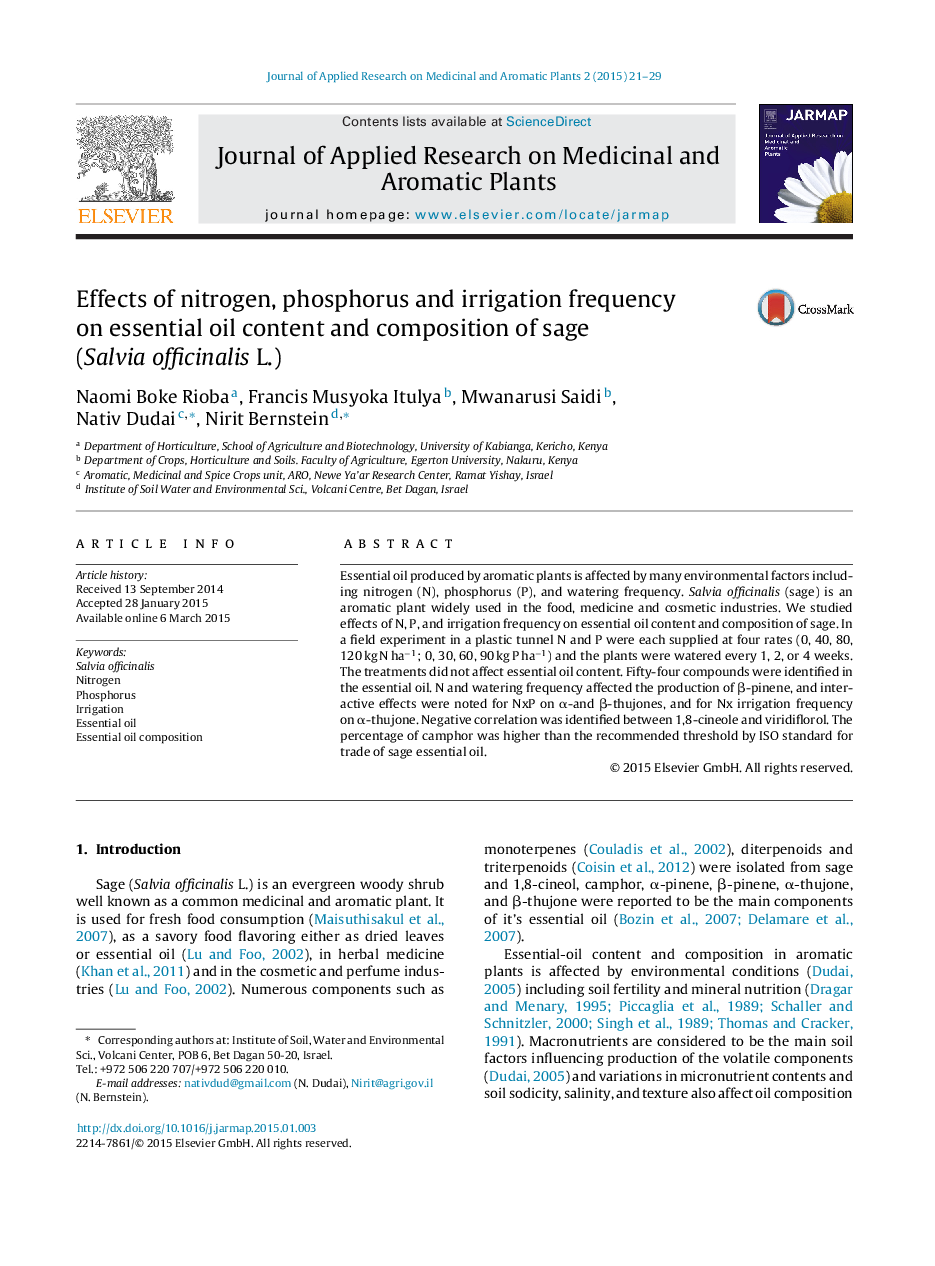| Article ID | Journal | Published Year | Pages | File Type |
|---|---|---|---|---|
| 3099203 | Journal of Applied Research on Medicinal and Aromatic Plants | 2015 | 9 Pages |
•N, P and irrigation frequency did not affect the content of the essential oil in sage.•β-Pinene increased with increasing N level and decreased with reducing irrigation frequency.•NxP interaction affected α- and β-thujone accumulation, and Nx irrigation frequency affected α-thujone.•The share of 1,8-cineole and viridiflorol in the essential oil negatively correlated.
Essential oil produced by aromatic plants is affected by many environmental factors including nitrogen (N), phosphorus (P), and watering frequency. Salvia officinalis (sage) is an aromatic plant widely used in the food, medicine and cosmetic industries. We studied effects of N, P, and irrigation frequency on essential oil content and composition of sage. In a field experiment in a plastic tunnel N and P were each supplied at four rates (0, 40, 80, 120 kg N ha−1; 0, 30, 60, 90 kg P ha−1) and the plants were watered every 1, 2, or 4 weeks. The treatments did not affect essential oil content. Fifty-four compounds were identified in the essential oil. N and watering frequency affected the production of β-pinene, and interactive effects were noted for NxP on α-and β-thujones, and for Nx irrigation frequency on α-thujone. Negative correlation was identified between 1,8-cineole and viridiflorol. The percentage of camphor was higher than the recommended threshold by ISO standard for trade of sage essential oil.
